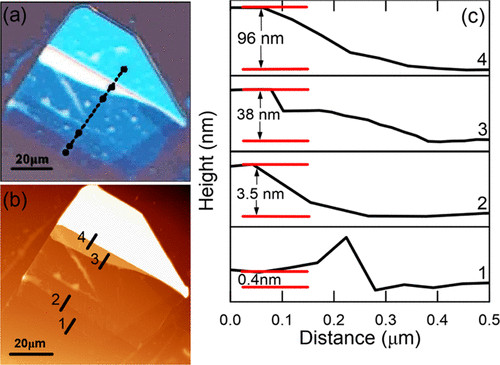ABSTRACT
Raman spectroscopy is employed to investigate the temperature dependence of the E2g phonon mode of single-layer, few-layer (FL), and bulk hexagonal boron nitride (hBN) sheets, situated over Si/SiO2 (90 nm). Depending on the sample, two temperature regimes are recorded. In the low to mid range of the examined temperatures, the monolayer and FL samples exhibit significantly higher slopes compared to the thicker ones because of the thermal expansion of the underlying substrate. In the high-temperature region, all the examined samples show almost the same temperature slope, indicating slippage of the hBN sheets relative to the substrate and providing strong evidence that the slopes of the monolayer, FL, and bulk hBN are quite similar of about −0.020 cm–1/K. This is further justified from the full width at half-maximum versus T of the studied samples and the observed similarities of the thermal expansion coefficient (TEC) of one to three layers and bulk hBN, revealing a comparable level of anharmonicity for the E2g mode from the monolayer up to bulk hBN. Moreover, using a finite element method, we have determined the TEC of the underling substrate and the strain induced by TEC mismatch between the single-layer hBN and the substrate. Consequently, the intrinsic frequency shift of the E2g mode for the monolayer hBN upon temperature change is extracted. Finally, the vibrational response of monolayer hBN upon temperature is also examined by means of computational simulations, and satisfactory agreement with the experiment is obtained.


